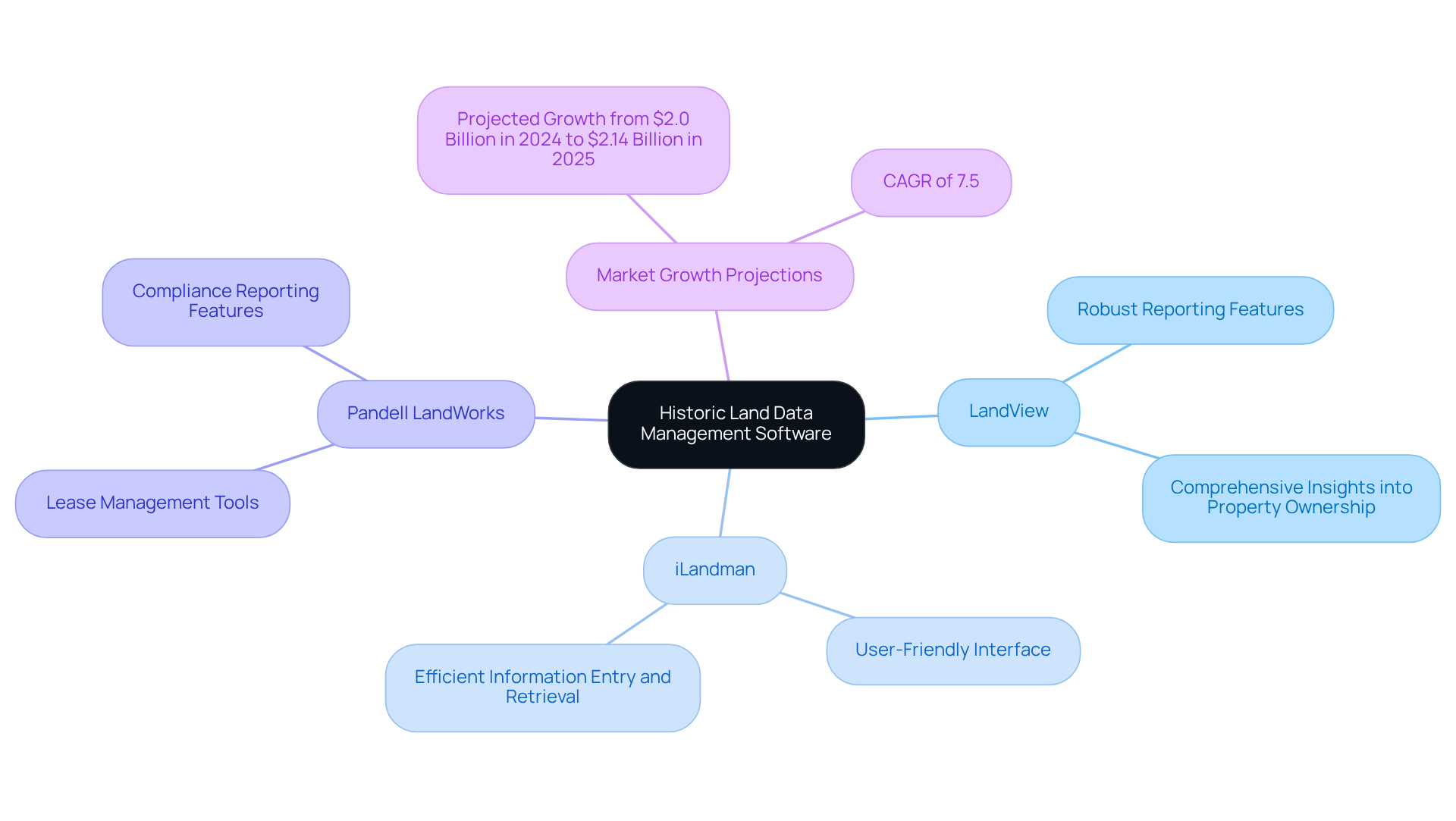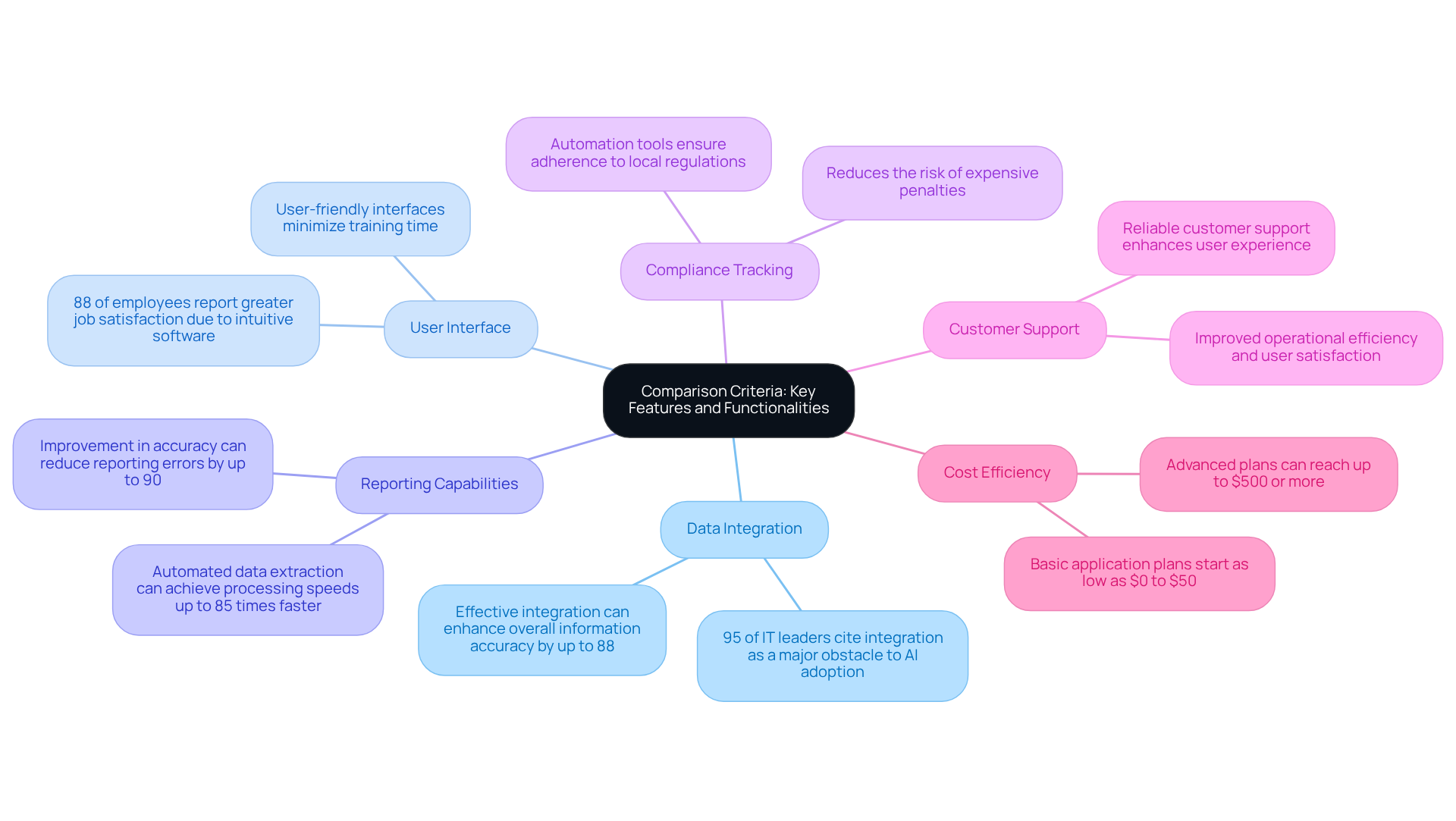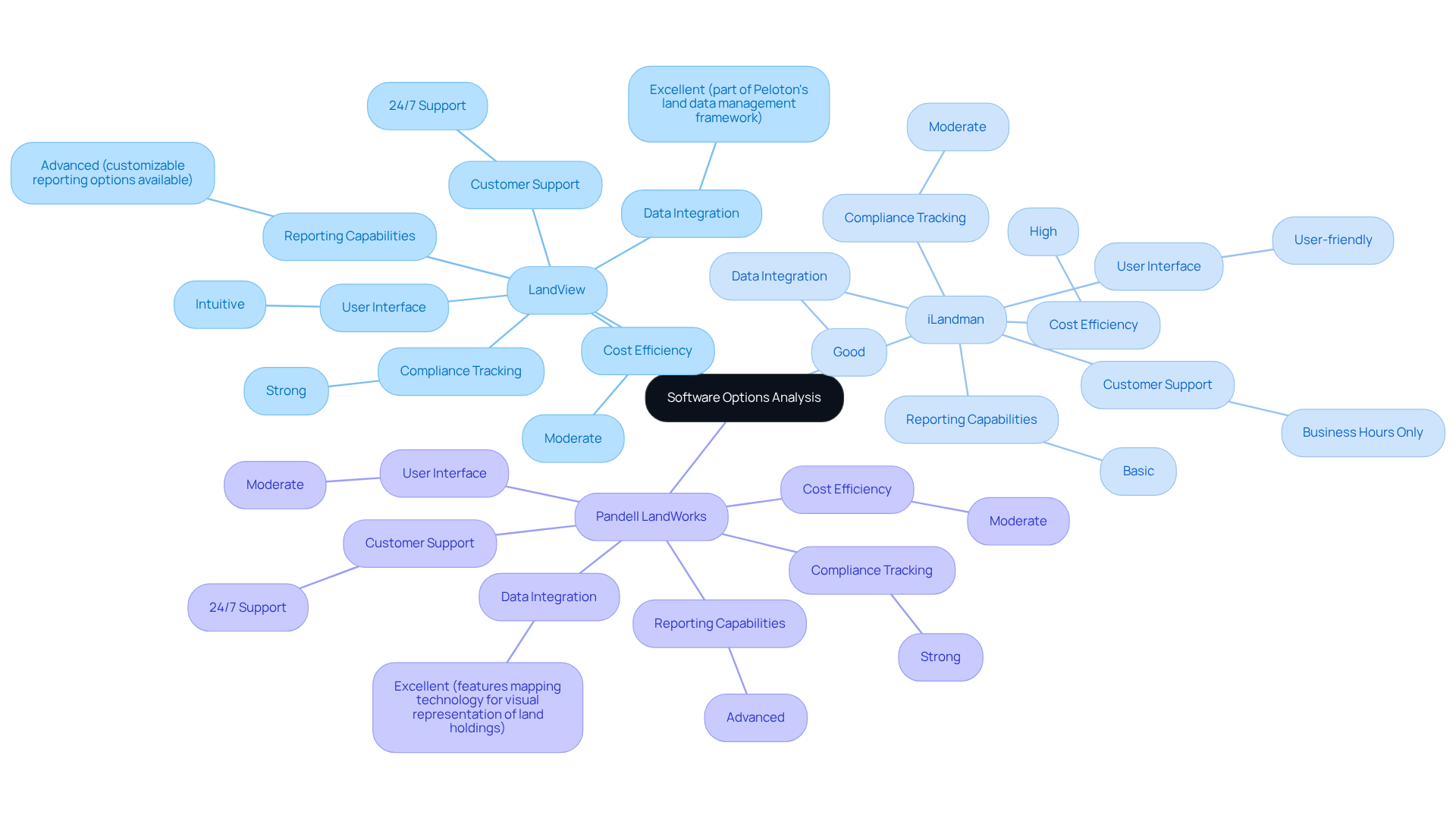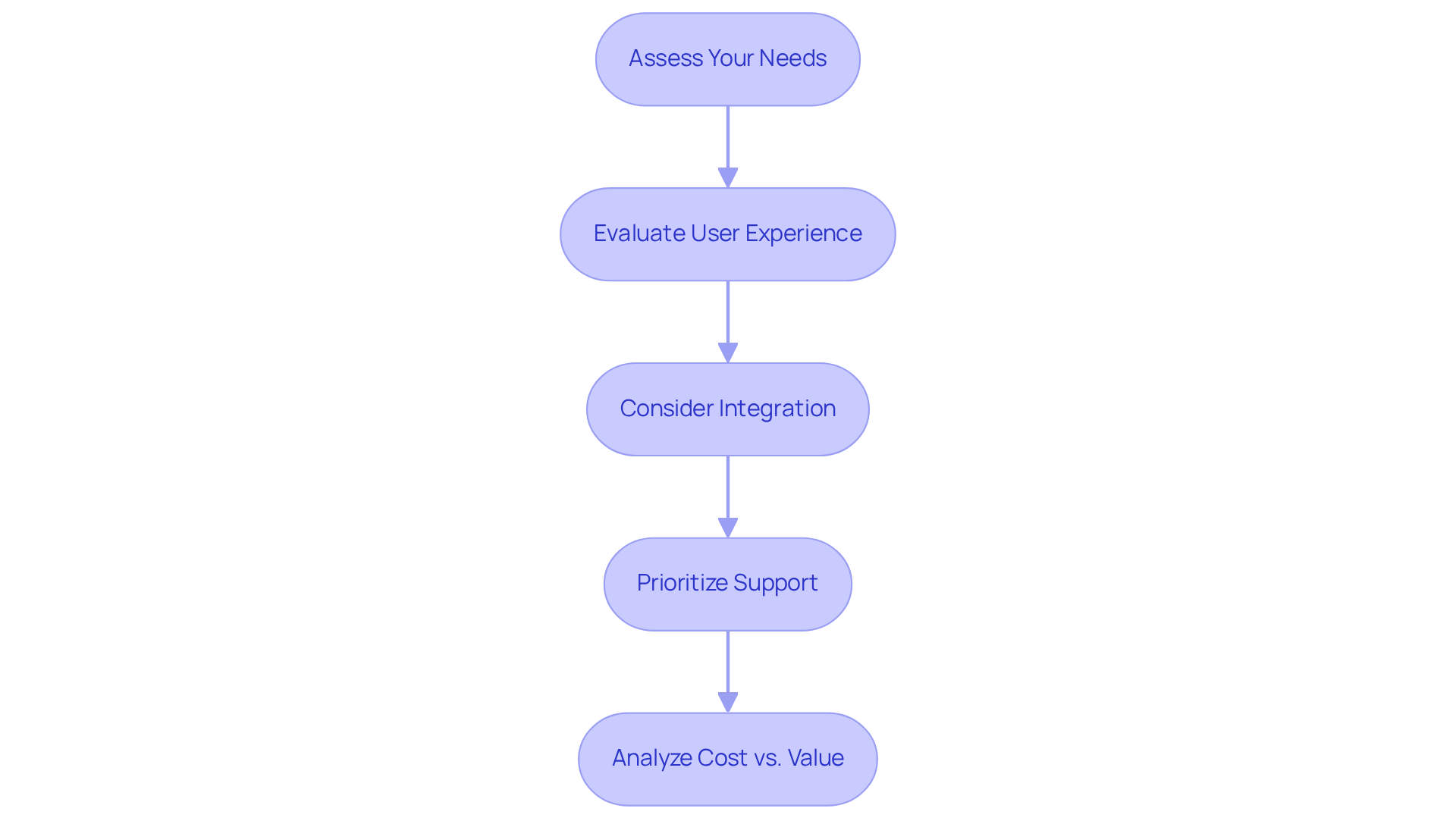Overview
The foremost software solutions for managing historic land data encompass options such as LandView, iLandman, and Pandell LandWorks, each presenting distinctive features tailored to the requirements of real estate professionals. This article underscores the critical nature of assessing criteria including:
- Data integration
- User interface
- Reporting capabilities
- Customer support
Such evaluations are essential to guarantee that the chosen software significantly enhances operational efficiency and accuracy in the management of historic property information.
Introduction
The management of historic land data is increasingly complex due to advanced technologies and the pressing need for precise tracking of property ownership. As professionals navigate this evolving landscape, choosing the appropriate software solution can profoundly affect operational efficiency and compliance. However, with a plethora of options available, how can one ascertain which software best aligns with their specific needs? This article explores the leading contenders for managing historic land data, meticulously comparing their features and functionalities to empower professionals in making informed decisions in 2025.
Overview of Software Solutions for Historic Land Data Management
In the administration of historic property data, various software for managing historic land data has emerged to address the challenges of tracking and verifying ownership. These solutions vary from extensive property management systems to and compliance tracking. Noteworthy options include:
- LandView
- iLandman
- Pandell LandWorks
Each designed with distinct features to meet the specific needs of real estate professionals. For instance, LandView stands out by providing robust reporting features, enabling users to generate comprehensive insights into property ownership and usage. In contrast, iLandman emphasizes user-friendly interfaces, facilitating efficient information entry and retrieval processes.
As the terrain oversight application market is projected to increase from $2.0 billion in 2024 to $2.14 billion in 2025, indicating a CAGR of 7.5%, understanding alternatives such as software for managing historic land data is vital for professionals seeking to enhance operational efficiency and precision in managing historical property information. Furthermore, the integration of advanced technologies, such as GIS and AI-powered analytics, underscores the evolving landscape of resource management solutions. Consequently, it is essential for users to remain informed about the latest trends and tools available in 2025.

Comparison Criteria: Key Features and Functionalities
When evaluating software solutions for managing historic land data, several essential features and functionalities must be prioritized:
- Data Integration: Seamless integration with existing databases and systems is vital for efficient operations. Organizations frequently encounter difficulties with information integration, as 95% of IT leaders cite it as a major obstacle to AI adoption. Effective integration can enhance overall information accuracy by up to 88%.
- User Interface: A user-friendly interface is crucial for minimizing training time and boosting user adoption rates. Software that is intuitive can lead to improved job satisfaction, with 88% of employees reporting greater job satisfaction and reduced stress due to automation tools.
- Reporting Capabilities: Advanced reporting tools are necessary for generating insights and tracking historical changes effectively. Organizations utilizing automated data extraction can achieve processing speeds up to 85 times faster than traditional methods, significantly enhancing reporting efficiency.
- Compliance Tracking: Features that assist in maintaining compliance with legal requirements are essential for mitigating risks. Automation tools equipped with compliance tracking features ensure adherence to local regulations, reducing the risk of expensive penalties.
- Customer Support: Reliable customer support enhances user experience and facilitates prompt issue resolution. Organizations that prioritize customer service often see improved operational efficiency and user satisfaction.
- Cost Efficiency: Understanding the pricing structure and potential return on investment is vital for budget-conscious organizations. With basic application plans starting as low as $0 to $50, and advanced plans reaching up to $500 or more, is essential for long-term sustainability.
These standards provide a robust framework for evaluating the various system choices available in the market, ensuring that organizations can select software for managing historic land data that meets their specific requirements and enhances their territory oversight capabilities.

Side-by-Side Analysis of Leading Software Options
The following presents a comprehensive analysis of three leading software options for managing historic land data:
-
Feature/Software:
- LandView
- iLandman
- Pandell LandWorks
-
- Excellent (part of Peloton's land data management framework)
- Good
- Excellent (features mapping technology for visual representation of land holdings)
-
- Intuitive
- User-friendly
- Moderate
-
- Advanced (customizable reporting options available)
- Basic
- Advanced
-
- Strong
- Moderate
- Strong
-
- 24/7 Support
- Business Hours Only
- 24/7 Support
-
- Moderate
- High
- Moderate
This analysis indicates that while all three software options possess unique strengths, LandView and Pandell LandWorks stand out in data integration and reporting capabilities. Consequently, these solutions are particularly suitable for organizations prioritizing comprehensive data management. Furthermore, LandView's ability to manage obligations, payments, royalties, and acreage effectively further enhances its appeal.

Recommendations for Title Research Professionals: Choosing the Right Software
For title research professionals aiming to select the most suitable software for managing historic land data, adhering to the following best practices is essential:
- Assess Your Needs: Clearly define the features essential to your workflow, such as reporting capabilities and compliance tracking, to ensure the program meets your specific requirements. Consider advanced machine learning tools like those offered by Parse AI, which expedite document processing and interpretation, including the example manager that allows for quick annotation of unstructured documents.
- Evaluate User Experience: Choose applications with an intuitive interface to reduce training time and boost productivity. A clean dashboard can significantly enhance user engagement, especially when utilizing features like interactive labeling and OCR technology for document processing.
- Consider Integration: Opt for solutions that seamlessly integrate with existing systems like Resware, Qualia, or SoftPro, facilitating smoother data management processes and minimizing disruptions. Parse AI's platform is designed to enhance integration, making it easier to manage title research workflows.
- Prioritize Support: Choose a service provider that offers , guaranteeing help is readily accessible for any issues that may occur during use. Parse AI is committed to providing robust support to help users maximize the benefits of their advanced tools.
- Analyze Cost vs. Value: Carefully weigh the software's cost against the potential gains in efficiency and accuracy it can deliver. Investing in the right technology, such as Parse AI's title research automation, can lead to significant long-term savings by streamlining processes and improving accuracy.
By adhering to these recommendations and leveraging advanced tools like those from Parse AI, title research professionals can enhance their operational efficiency and accuracy in using software for managing historic land data, ultimately leading to more informed decision-making and improved outcomes in real estate transactions.

Conclusion
In the quest for effective management of historic land data, selecting the right software is paramount. The variety of options available, from comprehensive property management systems to specialized title research tools, underscores the necessity of understanding each solution's unique capabilities. By carefully considering factors such as:
- Data integration
- User interface
- Reporting capabilities
- Compliance tracking
- Customer support
- Cost efficiency
professionals can ensure they choose the software that best aligns with their operational needs.
The article provides a thorough analysis of leading software options like LandView, iLandman, and Pandell LandWorks, emphasizing their distinct features and strengths. Key insights reveal that:
- LandView excels in data integration and reporting
- Pandell LandWorks offers strong compliance tracking and customer support
These evaluations serve as a guide for title research professionals, enabling them to make informed decisions that enhance their workflow and accuracy in managing historic land data.
Ultimately, leveraging advanced software solutions is essential for optimizing historic land data management practices. By following best practices for software selection and considering the recommendations outlined, professionals can significantly improve their operational efficiency and decision-making processes. Embracing technology not only streamlines workflows but also ensures compliance and accuracy, paving the way for successful real estate transactions in an ever-evolving landscape.
Frequently Asked Questions
What is the purpose of software solutions for historic land data management?
These software solutions are designed to address the challenges of tracking and verifying ownership of historic property data.
What types of software are available for managing historic land data?
The available software varies from extensive property management systems to specialized tools focused on title research and compliance tracking.
Can you name some notable software options for historic land data management?
Notable options include LandView, iLandman, and Pandell LandWorks.
What are the key features of LandView?
LandView is known for its robust reporting features, allowing users to generate comprehensive insights into property ownership and usage.
What distinguishes iLandman from other software?
iLandman emphasizes user-friendly interfaces, which facilitate efficient information entry and retrieval processes.
What is the projected market growth for terrain oversight applications?
The market is projected to increase from $2.0 billion in 2024 to $2.14 billion in 2025, indicating a compound annual growth rate (CAGR) of 7.5%.
Why is it important for professionals to understand software alternatives for managing historic land data?
Understanding these alternatives is vital for enhancing operational efficiency and precision in managing historical property information.
What advanced technologies are influencing the landscape of resource management solutions?
The integration of advanced technologies such as GIS (Geographic Information Systems) and AI-powered analytics is influencing the landscape.
Why should users stay informed about trends and tools available in 2025?
Staying informed helps users adapt to the evolving landscape of resource management solutions and utilize the latest technologies effectively.




